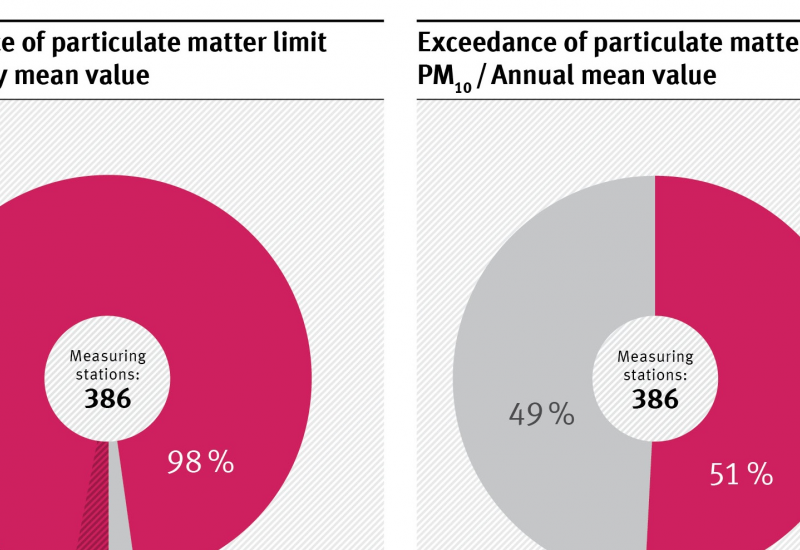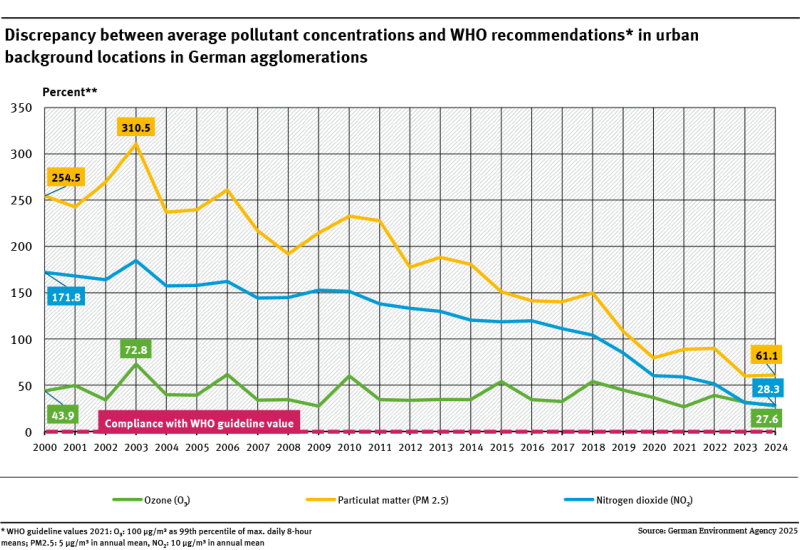Experts at the monitoring stations of the German states and the German Environment Agency take multiple daily measurements to determine the air quality in Germany. Shortly after measurements are taken, you can go to our “Current air data” webpage to look up measured values, some forecast data, and data on past years. read more
nitrogen dioxide
Air
Reactive nitrogen
Reactive nitrogen, unlike nonreactive molecular nitrogen (N2), is in a great many organic and inorganic substance compounds and of vital importance to all life processes. The availability of reactive nitrogen often limits plant growth, which is why sufficient supply of reactive nitrogen is so important in food production. If excessive amounts of reactive nitrogen are deposited to the environment,... read more
Air
Nitrogen dioxide
The main sources of the air pollutant nitrogen dioxide are combustion processes in the industrial and energy production sectors, and road transport. Nitrogen dioxide affects the respiratory mucous membrane and influences the respiratory function. read more
News on Air
Air pollutants still a health burden
Nitrogen dioxide and particulates in particular still had an impact on air quality and on human health in Germany in 2013. read more
News on Air
Compliance with caps on air pollutants still problematic
Air pollution caused by nitrogen dioxide and particulates continued to be too high in Germany in 2012. read more
Umwelt-Indikator
Indicator: Air quality in agglomerations
The basic pollution levels in German conurbations significantly exceed WHO recommendations from 2021 for particulate matter (PM2.5) and nitrogen dioxide (NO₂).In the vicinity of pollutant sources, pollution levels can even be significantly higher.The situation for NO₂ and PM2.5 has improved considerably since 2000, but the WHO recommendations for 2021 are still clearly exceeded.Ozone and PM2.5 pol... read more





